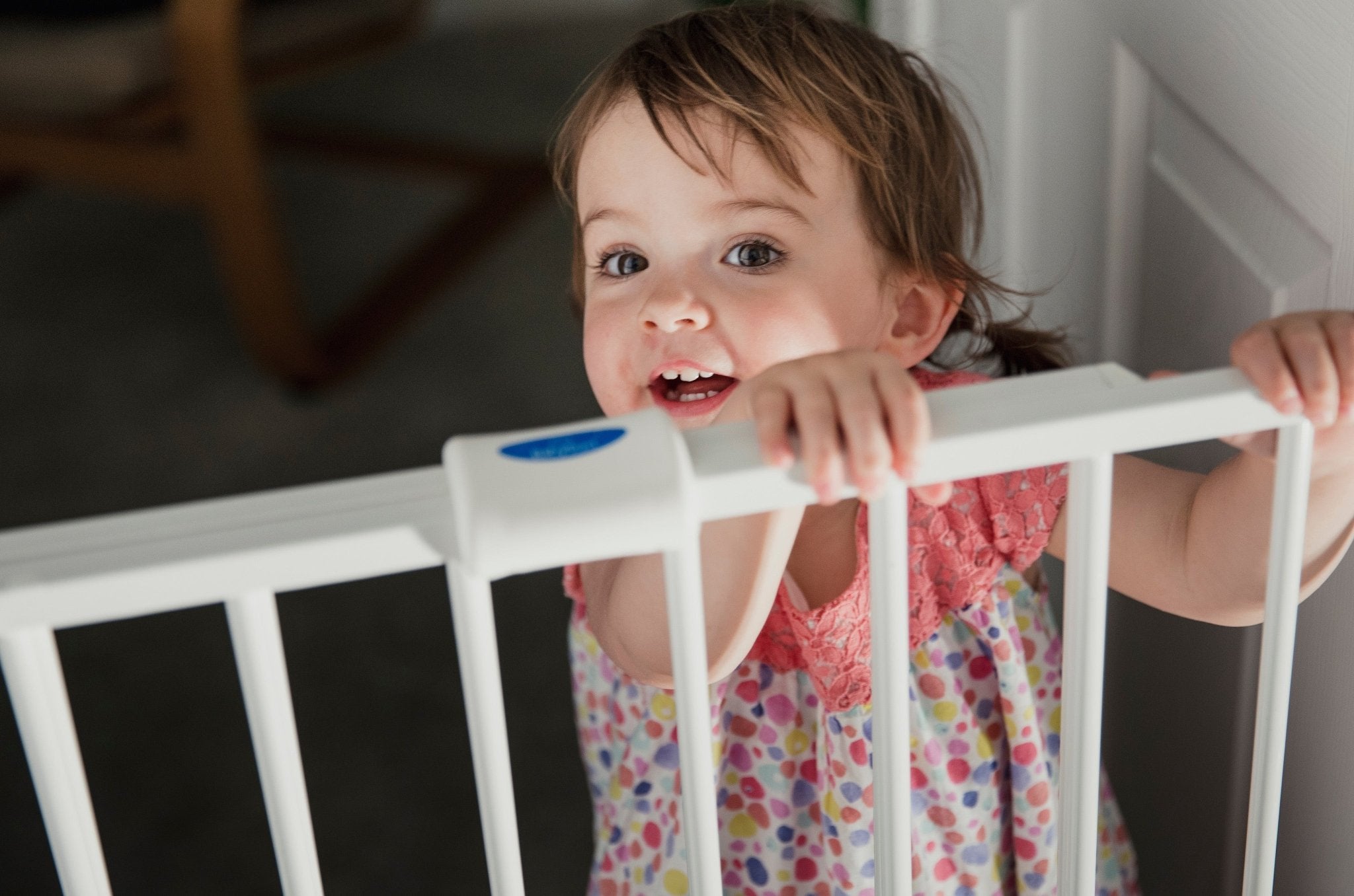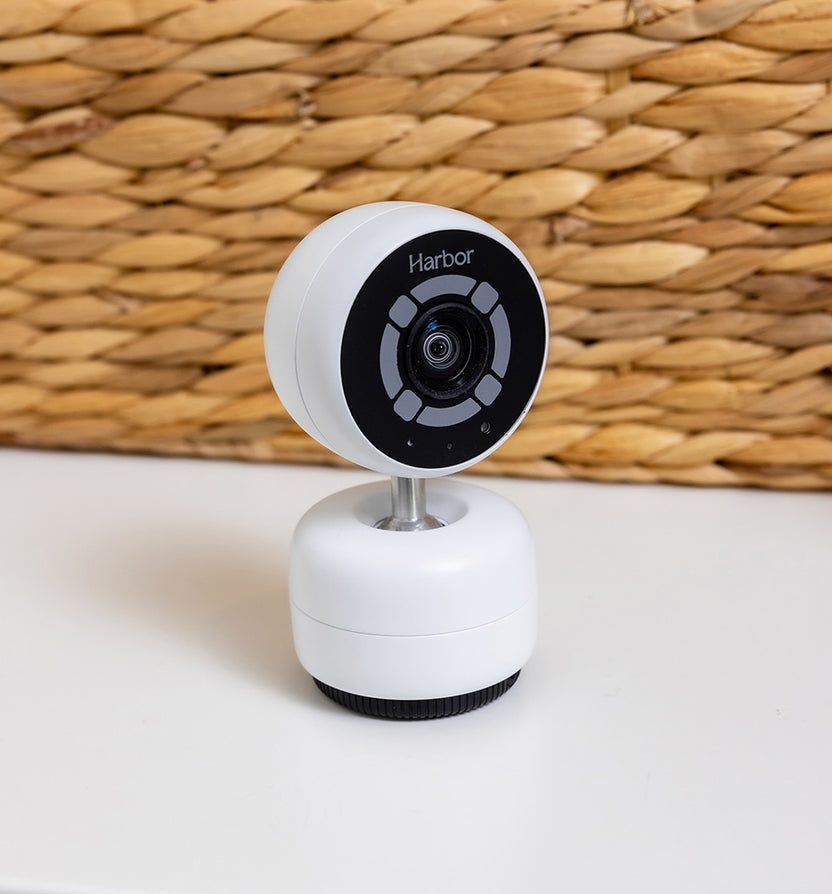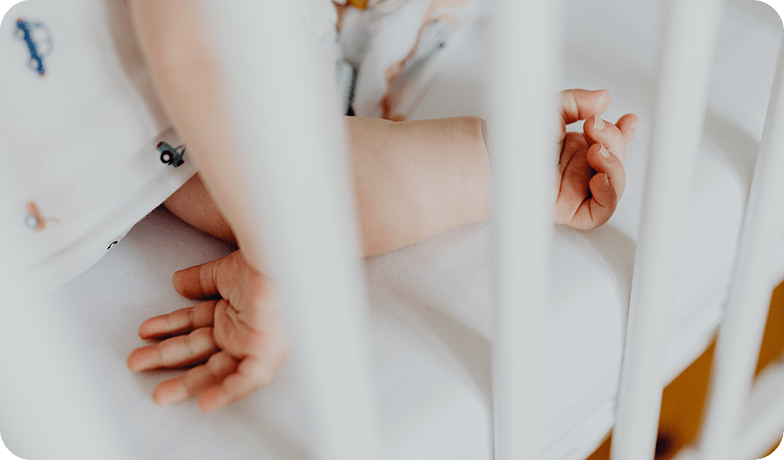
A parent’s protective instincts typically kick in long before their baby arrives. Once a child enters your home, you’ll likely begin to look at it differently, spotting outlets that need to be covered, corners that need to be padded, and furniture that is at risk of tipping over.
Identifying hazards in your home and proactively addressing them gives your baby a safe space to play, grow, and thrive. Knowing that you’ve baby proofed your home can grant you peace of mind, as well, trusting that you’ve taken the appropriate measures to keep your little one safe. It’s best to start these efforts before your baby starts crawling to be proactive and give you a chance to catch anything you might have missed.
An important note: of course you can’t baby proof the world around your child everywhere. Kids will fall down, get hurt, and do things that they shouldn’t. Baby proofing is a necessary and appropriate step for babies, especially with things like electrical outlets. As kids age, you’ll be able to roll most of these things back. Safetyism has gone too far with some parents seeking to ensure nothing could ever happen to their children. Baby proofing is not safetyism! New parents are surprised how quickly babies can cause a lot of trouble! Read on for practical tips to make your environment age appropriately safe for babies.
Baby Proofing Tips
Identify potential hazards
Start by identifying potential hazards and anything that could pose a risk to your little one's safety. Walk through your living space and note any sharp corners, electrical outlets, dangling cords, and choking hazards like loose hardware. This will allow you to minimize the risk of incidents proactively.
If baby proofing the whole house at once feels overwhelming, go room by room and use baby gates to ensure that baby stays in spaces that you know are safe.
Know your home’s history
Lead exposure poses a significant risk, particularly in homes built before the ban on lead paint in 1978. Paint can chip and create dust over time, especially on windowsills, potentially exposing layers of lead paint beneath newer coats.
Lead poisoning can have lifelong consequences like cognitive impairment. If your home was built before 1978 or if you know that it has lead paint, consider seeking assistance from a trained lead remediation professional.
Get emergency first aid certified
It’s recommended that caregivers and parents are trained in infant CPR and choking first aid, ideally before the baby arrives. Make sure you have a well-equipped baby first aid kit readily accessible in your home.
Be especially mindful of your baby’s immune system & sick people
Before your newborn has been vaccinated, their immune system will still be developing. It’s important to ensure that anyone who comes in contact with them has been vaccinated against whooping cough through the TDAP (tetanus, diphtheria, and pertussis) vaccine. Especially in the first 8 weeks, ask friends, family and neighbors to wait to see your little one if they may be sick or have been traveling. Be vigilant about hand washing too.
Invest in baby proofing tools
While you could DIY your baby proofing, there are countless high-quality tools available that can make your home safer, from cabinet locks and outlet covers to corner guards and toilet locks.
Be sure to choose reputable, durable tools that are easy to install and meet safety standards. Always follow the manufacturer’s instructions when installing and using baby proofing tools to ensure their efficacy.
Secure furniture and fixtures
One of the most important baby proofing tasks is securing furniture and fixtures to prevent them from toppling over. Anchor heavy furniture like bookcases, dressers, and media consoles to the wall using brackets or furniture straps. You’ll also want to secure freestanding appliances like televisions and microwaves, in case your little explorer tries to climb on them.
Safety latches on drawers and cabinets can help your little one from accessing potentially dangerous items like cleaning supplies, medication, and sharp objects.
Apply corner guards to any sharp corners or edges in your home in reach of babies and toddlers. They’re inexpensive and easy to install, with bumpers that provide a protective cushion against sharp edges. Check your tables, countertops, shelves, fireplace hearths, and other hard surfaces!
Cover electrical outlets and cords
Outlets and cords pose a serious risk to curious babies who may be tempted to explore them with their hands or mouths. Cover all exposed outlets in your home, including those hidden behind furniture, with baby-safe outlet covers and safety plugs. These can prevent your little one from putting objects into electrical sockets.
You’ll also want to secure loose cords with cord covers or cable management systems to reduce the risk of strangulation, shock, and tripping.
Install safety gates and barriers
Safety gates and barriers prevent babies from accessing spaces that are off-limits or potentially hazardous. To reduce the risk of falls, put gates at the top and bottom of any staircase and at the entryway of any rooms you don’t want babies to wander into.
Look for gates that are easy to install, sturdy, and equipped with secure latching mechanisms. If your little one is prone to climbing, you may want a gate with vertical slats or mesh panels to prevent them from exploring.
Secure windows and doors
Windows and doors come with a risk of falls, entrapment, and pinched fingers. Make sure that all of your windows have window guards and window stops to prevent your baby from falling, especially on any upper floors in your home. Your window guard should attach to the window frame and have bars no wider than four inches apart. Some windows have these built in already.
Doorstops and door holders can prevent doors from closing suddenly, smashing baby’s fingers. Childproof locks and door handle covers can prevent your little explorer from wandering into dangerous areas like basements or garages. Many kids will learn how to open these “child proof” door covers, so make sure to pay attention, especially if the room contains dangerous items (like tools or chemicals).
Safely and securely store hazardous items
Many common household items pose a risk of injury or poisoning if ingested or mishandled. Store cleaning supplies, laundry gel, medication, and sharp objects in locked cabinets or high shelves, well out of the reach of baby’s curious hands. Smaller objects like batteries, magnets, and coins should be stored in secure containers to reduce the risk of choking or ingestion. Childproof safety latches and locked drawers can further prevent your little one from accessing potentially harmful materials.
Any firearms should be securely locked away and stored unloaded, with ammunition in a separate, securely locked location.It is not enough to just store a firearm up high.
Check your smoke and carbon monoxide detectors
Test your smoke and carbon monoxide detectors monthly and replace their batteries regularly, keeping an eye on any expiration dates (smoke detectors typically last for 10 years, while carbon monoxide sensors need to be replaced every 5–7 years).
You’ll want to install smoke and carbon monoxide detectors on every level of your home, especially near sleeping areas and fuel-burning appliances. Always follow the manufacturer’s instructions for proper placement and maintenance.
Eliminate choking hazards
Curious babies are prone to putting objects into their mouths. To reduce the risk of choking hazards, properly store and secure all small objects that can be swallowed or lodged in baby's airway, like coins, buttons, jewelry, magnets, and small toys.
As a general rule, if an object can fit through a toilet paper tube, it’s too small for baby.
Keep an eye out for anything that may have fallen on the floor, and keep choking hazards out of reach by storing them in locked containers or on high shelves.
Get smart about bathtub safety
When it comes to bathtubs, you’ll want to keep an eye on the water temperature and water depth:
If you’re able to, set your water heater at 120 degrees Fahrenheit or lower to prevent burns. It’s important to know that babies and toddlers can drown in as little as one inch of water. Be attentive during bathtime to ensure their safety and comfort. For the first few months, consider use a bathtub accessory that can help hold baby properly in the bath to avoid tipping over.
Create a safe sleep environment
A safe sleep environment requires a flat, firm mattress covered in a well-fitting sheet. Avoid extra bedding, pillows, and stuffed animals, as they can pose a suffocation hazard. Position baby’s crib away from windows, blinds, and any curtains, as well as at least three feet away from any cords that pose a risk of entanglement.
For additional peace of mind, Harbor’s Monitor allows you to keep an eye on your little one while they sleep without needing to enter their room.
Create a safe play space
Creating a designated space with a secure enclosure allows baby to play while you attend to household chores next to them, like cooking and cleaning. Never leave your child unattended.
Depending on your little one’s age and mobility, a pack-and-play can be a great option. It allows soft padding for comfort and safety, with a portable design that allows you to easily move it from room to room.
A gated enclosure can also be a great option, offering your little one more room to roam.
Offer a variety of interactive toys to stimulate their senses and encourage exploration. You’ll want to avoid any toy boxes with lids, however, as babies can get stuck inside or pinch their fingers.
To recap
Baby proofing your home is an essential step in ensuring a safe environment for your baby to grow. Proactively identifying potential hazards allows you to implement practical solutions, reducing the risk of injuries and incidents.
It’s important to stay vigilant, as you’ll need to adjust your baby proofing measures as your little one grows and begins to explore.
While this may seem overwhelming, these are necessary steps. New parents are surprised how quickly they’re children can escape their gaze once they start crawling, and normal homes have countless hazards that pose serious risks. These basic steps can set your family up for a healthy environment that allows your child to explore their world at an age appropriate level.
Harbor is here to support you at every step of the parenting journey. If you have any questions about baby proofing or creating a safe environment, our infant care experts are available to offer guidance, recommendations, and reassurance.
https://cdxappstest.epacdx.net/ocspp-oppt-leadhub/firm-location-search




